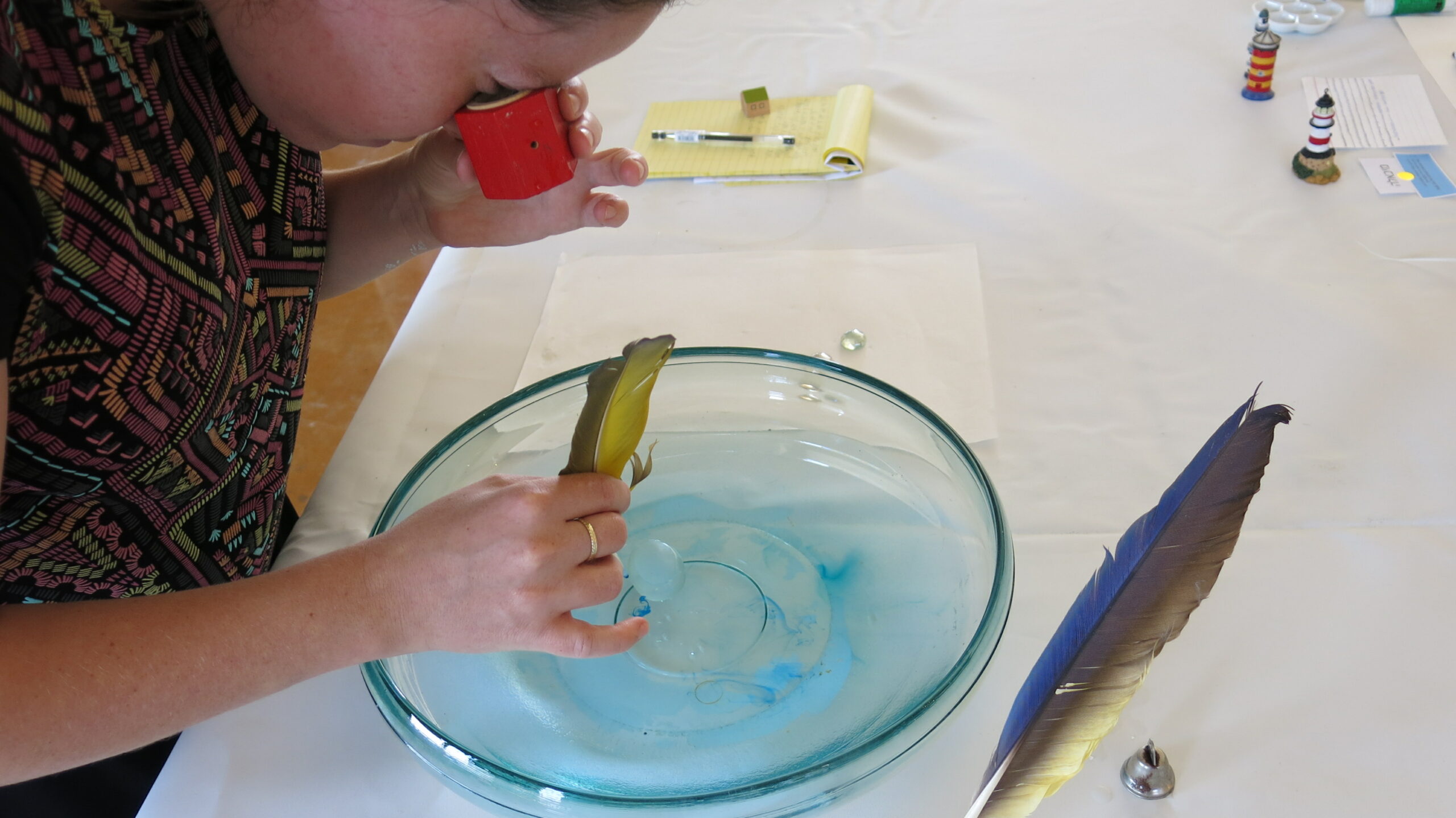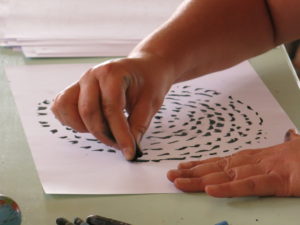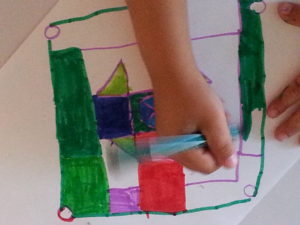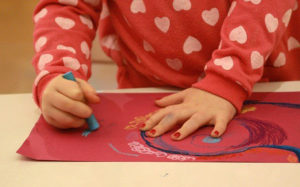What is the right timing for suggestions in an art studio?

How, when, and what is the right time to suggest a technique or anything else to your students?
Suggestions for a student can be fruitful but also intervention and even an impingement.
How do we navigate this everyday process?
I will share my thoughts in a nutshell and will also give you a tool to use so that you can do it too.
A. The studio manager is knowledgeable concerning art techniques and art history. She is also experienced with types of pedagogical and emotional processes that will foster different aspects of personal creation or group work. She expresses that knowledge through suggestions about materials and interventions.
B. As I perceive the goal of therapists and educators, we first need to understand the personal process of the child in the context of the universal developmental stages we learned from Kellogg, Lowenfeld, and others.
I title the personal phenomenology the spirtual blueprint.
C. The wonder of an individual’s specific phenomenology can be revealed and identified by displaying and examining a chronological collection of that person’s artwork. These phenomenological observations yield manifestations of patterns: repeated choices of color, line, shapes, texture, signs, composition, rhythm, ornamentation, perspective, and so on. These patterns are one’s spiritual blueprint.

A pattern can be witnessed quite easily, particularly in children’s artwork, as they are candid, blunt, and authentic and are not intentionally “making art” that conforms to certain expectations or aims to please a particular viewer. They create curiously and naturally: when they organize toys and blocks on the floor, mark dots and lines, or punch clay, their activity is not yet layered with art history and external technical knowledge. They explore and experiment. They discover the world and organize their knowledge in a way that makes
sense to them.It is fascinating to observe their actions imprinted on matter, and how this corresponds to and derives from the universal development process all children go through. They are bound to follow the archetypical process of children’s natural developmental stages, but at the same time they express a genuinely personal process—a one-of-a-kind expression—as it is beautifully interwoven with endless variations.
Citations are from my new book, 2020, The Good Enough Studio

Based on this – here is my process:
I spread about 10 artworks chronologically. I write down the list of phenomenology I notice. I might add more ideas and thoughts I have. I notice what is used more often. The PDF will teach you the process. Not all of it will be relevant, and you might find more to add to it.
After you have a collection of one student’s phenomenology, you will look at them at work and observe yourself. You might notice more. It is an ongoing process. It would be best if you revisited it as the creators are changing and developing.
Your ability to observe will deepen. You will have a border point of view. Your document process is also documenting your ability to see!
Please be modest and careful, and flexible: this is not an evaluation list of any kind! More than anything, it is a process of YOUR ability to see what is out there. With the information you gather, you might be more helpful and accurate.
I have been documenting my grandchildren since they first began scribbling. The oldest one is 12 years by now -and it unfolded every day as the center of the blueprint is shining.
This process of excavating the blueprint becomes second nature. Now, when you are much more involved and know the student, you will know exactly what and when to suggest a Matisse book or a technique in watercolors.
You will become much more attuned, compassionate, and accurate with your suggestions.
The tool is useful to research artists as well.
The Good Enough Studio book is here!
The-Spiritual-Blueprint-phenomenological-worksheet-Nona-Orbach-2020.pdf
